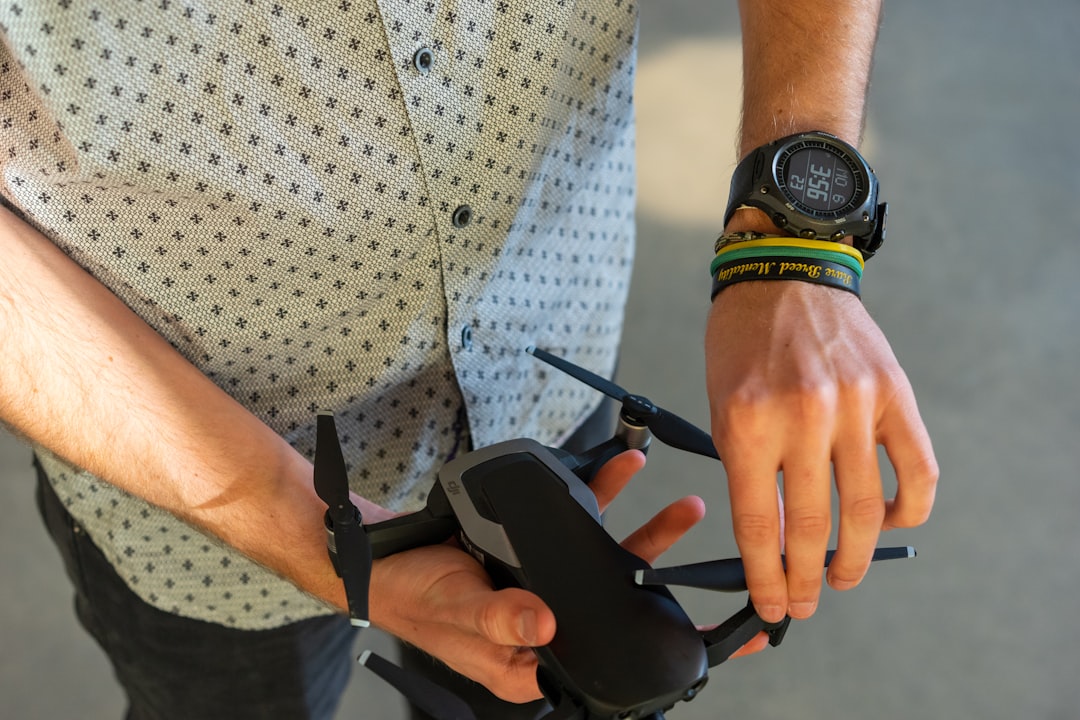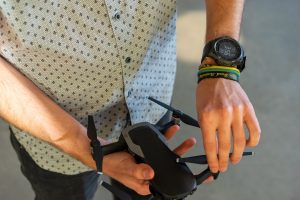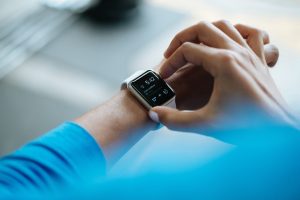Wearables for Health Nuts: Benefits vs. Privacy Risks
Explore the benefits and privacy risks of health wearables championed by RFK Jr. Stay informed and make the best choice for your wellness jo
Introduction to RFK Jr. and Wearables
Who is RFK Jr.?
Robert F.
Kennedy Jr., commonly known as RFK Jr., is a prominent American environmental attorney, author, and activist. He is the son of Robert F.
Kennedy and nephew of former President John F. Kennedy.
Over the years, RFK Jr. has been involved in various public health and environmental initiatives, advocating for policies that promote sustainability and well-being.
RFK Jr.’s Advocacy for Wearables
RFK Jr.
has recently turned his attention to the potential of wearable technology in enhancing public health. He believes that wearables can empower individuals by providing real-time health data, enabling better personal health management.
His advocacy is rooted in the idea that informed individuals can make healthier lifestyle choices, ultimately reducing the burden on healthcare systems.
Benefits of Wearables
Wearable devices, such as fitness trackers and smartwatches, offer numerous benefits. They provide users with insights into their daily physical activity, heart rate, sleep patterns, and more.
This data can motivate individuals to increase their physical activity, improve sleep quality, and make healthier dietary choices. Additionally, wearables can facilitate early detection of potential health issues, allowing for timely medical intervention.
Risks and Concerns
Despite their benefits, wearables also pose certain risks.
Privacy concerns are paramount, as these devices collect sensitive health data that could be vulnerable to breaches. There is also the issue of data accuracy; inaccurate readings might lead to unnecessary anxiety or complacency.
Furthermore, the constant monitoring can sometimes lead to an unhealthy obsession with numbers, detracting from overall well-being.
Balancing Benefits and Risks
To maximize the benefits of wearables while mitigating risks, it is essential to adopt a balanced approach. Users should be educated on how to interpret data accurately and maintain a healthy relationship with technology.
Additionally, robust privacy measures must be implemented by manufacturers to protect user data. RFK Jr.’s vision for widespread wearable adoption hinges on addressing these challenges while promoting the potential health benefits.
Benefits of Using Wearables
Improved Health Monitoring
Wearable devices, such as fitness trackers and smartwatches, provide continuous health monitoring, which can lead to early detection of potential health issues.
They track vital signs like heart rate, sleep patterns, and physical activity levels, offering users valuable insights into their overall health. This real-time data can be crucial for individuals managing chronic conditions or those looking to improve their fitness levels.
Enhanced Fitness and Activity Tracking
Wearables encourage users to stay active by setting daily goals and providing reminders to move.
They offer detailed analytics on workouts, helping users understand their performance and progress. Many devices also include features like GPS tracking for outdoor activities, making it easier to log distances and routes for activities such as running or cycling.
Personalized Health Insights
With the data collected, wearables can offer personalized health insights and recommendations.
This personalization can motivate users to make healthier lifestyle choices, such as adjusting their diet or increasing their physical activity. By analyzing trends over time, wearables can also help users identify patterns and make informed decisions about their health and wellness.
Convenience and Accessibility
Wearables provide a convenient way to access information without needing to check a smartphone constantly.
Notifications for calls, messages, and apps can be managed directly from the wrist, allowing for quick and easy communication. This accessibility makes wearables an attractive option for those who need to stay connected while on the go.
Integration with Other Technologies
Many wearables can integrate with other smart devices and health apps, creating a comprehensive ecosystem for managing health and wellness.
This integration allows for seamless data sharing between devices, providing a more holistic view of an individual’s health. It also enables users to set up automated routines and alerts, further enhancing the utility of wearables in daily life.
Risks Associated with Wearables
Data Privacy Concerns
One of the primary risks associated with wearables is the potential for data privacy breaches.
These devices continuously collect sensitive personal information, including health metrics, location data, and daily activity patterns. If this data is not adequately protected, it can be vulnerable to unauthorized access and misuse.
Users may find their personal information being sold to third parties or used in ways they did not consent to, leading to privacy invasions.
Security Vulnerabilities
Wearables often connect to other devices and networks, which can expose them to security vulnerabilities. Hackers may exploit these vulnerabilities to gain access to the device and, by extension, the user’s personal data.
This risk is heightened by the fact that many wearables have limited processing power, making it challenging to implement robust security measures. As a result, wearables can become easy targets for cyberattacks.
Health Risks
While wearables are designed to monitor health, there are concerns about their potential impact on health.
Prolonged exposure to electromagnetic fields (EMF) emitted by these devices could pose health risks, although research is still ongoing in this area. Additionally, the constant monitoring and notifications can lead to anxiety or stress in some users, as they may become overly focused on their health metrics.
Over-reliance and Inaccuracy
Another risk is the potential for users to become overly reliant on wearables for health management.
This dependence can lead to neglect of traditional medical advice and practices. Moreover, the data provided by wearables is not always accurate, which can result in misguided health decisions.
Inaccuracies in tracking can lead to false alarms or a false sense of security, impacting the user’s overall health management.
Social and Ethical Implications
Wearables also raise social and ethical concerns, particularly regarding surveillance and autonomy. The ability to track and monitor individuals continuously can lead to a surveillance culture, where individuals feel constantly watched.
This can impact personal freedom and autonomy, as users may alter their behavior due to the awareness of being monitored. Furthermore, there are ethical concerns about the equitable access to these technologies, as not everyone may afford or choose to use them.
Conclusion and Final Thoughts
Benefits of Wearables
Wearable technology, as advocated by RFK Jr., offers a range of benefits that can significantly enhance personal health management.
These devices provide real-time data on various health metrics such as heart rate, physical activity, and sleep patterns. This continuous monitoring can lead to early detection of potential health issues, allowing for timely intervention and personalized healthcare strategies.
Furthermore, wearables can motivate users to maintain healthier lifestyles by setting fitness goals and tracking progress.
The integration of wearables with mobile apps and other digital platforms also facilitates seamless sharing of health data with healthcare providers, enabling more informed medical consultations and tailored treatment plans.
Risks and Concerns
Despite the advantages, the widespread adoption of wearables is not without risks. Privacy concerns are paramount, as these devices collect sensitive personal health data.
The potential for data breaches or unauthorized access raises questions about the security measures in place to protect users’ information.
Additionally, the accuracy of data collected by wearables can vary, leading to possible misinterpretations of health conditions. Users may rely too heavily on these devices for medical advice, which could result in overlooking professional healthcare guidance.
It is crucial for users to understand that wearables are tools to aid in health management, not replacements for professional medical advice.
Balancing Benefits and Risks
To maximize the benefits of wearables while minimizing risks, it is essential for manufacturers to prioritize data security and accuracy. Implementing robust encryption and privacy policies can help protect user data, while continuous advancements in sensor technology can improve the reliability of health metrics.
Users should be educated on the proper use of wearables and encouraged to view them as complementary tools rather than standalone solutions.
By fostering a balanced approach, individuals can leverage the full potential of wearable technology to enhance their health and well-being.
FAQ
Q1: Who should consider buying wearables as suggested by RFK Jr.?
A1: Wearables can be beneficial for a wide range of individuals. Students might find them useful for tracking their physical activity and managing their schedules. Travelers can benefit from features like GPS navigation and health monitoring, which can enhance safety and convenience during trips. Additionally, professionals who are keen on monitoring their fitness levels, sleep patterns, or productivity can also find wearables advantageous. Essentially, anyone looking to integrate technology into their daily routines for health, fitness, or convenience could consider investing in wearables.
Q2: Are wearables compatible with other devices or software I already use?
A2: Most modern wearables are designed to be compatible with a wide range of devices and software. They typically connect via Bluetooth to smartphones, tablets, and computers, and many come with their own apps that are compatible with both iOS and Android operating systems. Additionally, wearables often integrate with popular health and fitness apps, allowing users to sync data seamlessly. However, it’s important to check the specific compatibility requirements of a wearable device before purchase to ensure it will work with your existing technology.
Q3: When is the best time to upgrade my wearable, or are there better alternatives available?
A3: The best time to upgrade your wearable largely depends on your current device’s performance and your personal needs. If your wearable is outdated, lacks features you need, or shows signs of wear and tear, it might be time to consider an upgrade. New models often come out annually, typically offering improved features such as better battery life, enhanced sensors, or new functionalities. As for alternatives, consider what specific features are most important to you. Some users might prefer smartwatches with more comprehensive capabilities, while others might opt for simpler fitness trackers. Researching the latest models and reading reviews can help you determine the best option for your needs.
Takeaway
Ready to make an informed decision on your next tech purchase? Dive into our hands-on product reviews to get a real feel for the gadgets you’re eyeing. Compare specs side by side to find the perfect match for your needs. And for even more details, head over to the official site. Let’s make sure you’re getting the best tech for you!
References











Comments